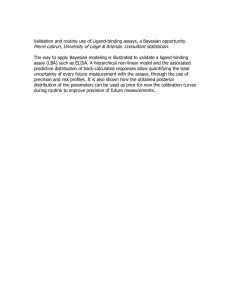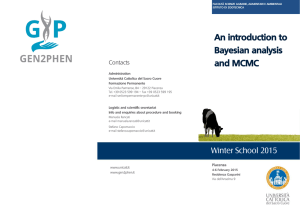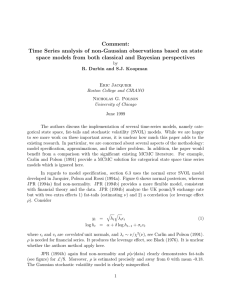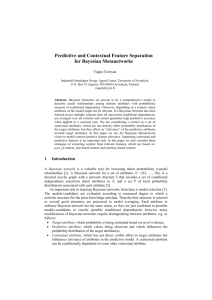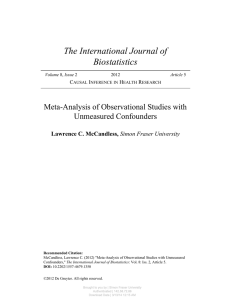Bayesian Evidence Synthesis and Network Meta
advertisement
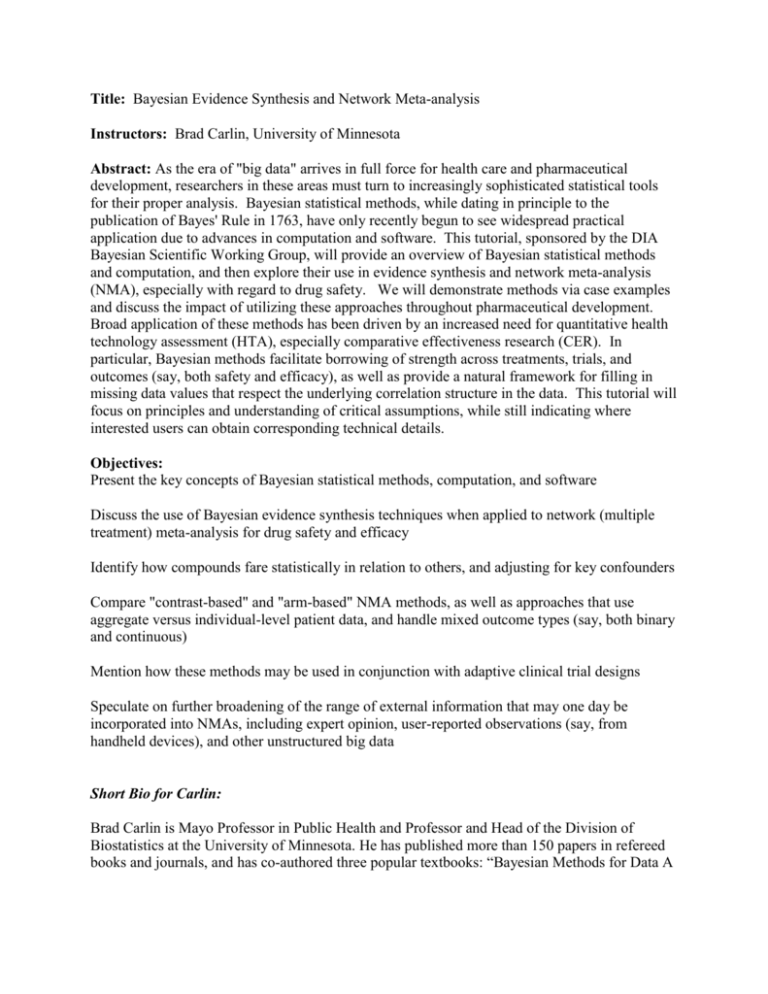
Title: Bayesian Evidence Synthesis and Network Meta-analysis Instructors: Brad Carlin, University of Minnesota Abstract: As the era of "big data" arrives in full force for health care and pharmaceutical development, researchers in these areas must turn to increasingly sophisticated statistical tools for their proper analysis. Bayesian statistical methods, while dating in principle to the publication of Bayes' Rule in 1763, have only recently begun to see widespread practical application due to advances in computation and software. This tutorial, sponsored by the DIA Bayesian Scientific Working Group, will provide an overview of Bayesian statistical methods and computation, and then explore their use in evidence synthesis and network meta-analysis (NMA), especially with regard to drug safety. We will demonstrate methods via case examples and discuss the impact of utilizing these approaches throughout pharmaceutical development. Broad application of these methods has been driven by an increased need for quantitative health technology assessment (HTA), especially comparative effectiveness research (CER). In particular, Bayesian methods facilitate borrowing of strength across treatments, trials, and outcomes (say, both safety and efficacy), as well as provide a natural framework for filling in missing data values that respect the underlying correlation structure in the data. This tutorial will focus on principles and understanding of critical assumptions, while still indicating where interested users can obtain corresponding technical details. Objectives: Present the key concepts of Bayesian statistical methods, computation, and software Discuss the use of Bayesian evidence synthesis techniques when applied to network (multiple treatment) meta-analysis for drug safety and efficacy Identify how compounds fare statistically in relation to others, and adjusting for key confounders Compare "contrast-based" and "arm-based" NMA methods, as well as approaches that use aggregate versus individual-level patient data, and handle mixed outcome types (say, both binary and continuous) Mention how these methods may be used in conjunction with adaptive clinical trial designs Speculate on further broadening of the range of external information that may one day be incorporated into NMAs, including expert opinion, user-reported observations (say, from handheld devices), and other unstructured big data Short Bio for Carlin: Brad Carlin is Mayo Professor in Public Health and Professor and Head of the Division of Biostatistics at the University of Minnesota. He has published more than 150 papers in refereed books and journals, and has co-authored three popular textbooks: “Bayesian Methods for Data A nalysis” with Tom Louis, “Hierarchical Modeling and Analysis for Spatial Data” with Sudipto Banerjee and Alan Gelfand, and "Bayesian Adaptive Methods for Clinical Trials" with Scott Berry, J. Jack Lee, and Peter Muller. He is a winner of the Mortimer Spiegelman Award from the APHA, and from 2006-2009 served as editor-in-chief of Bayesian Analysis, the official journal of the International Society for Bayesian Analysis (ISBA). He has received uninterrupted NIH support as PI for his methodological work continuously since 1992. Prof. Carlin has extensive experience teaching short courses and tutorials, and has won both teaching and mentoring awards from the University of Minnesota. During his spare time, Brad is a musician and bandleader, providing keyboards and vocals in a variety of venues, some of the more interesting of which are visible by typing the phrase "Bayesian cabaret" into the search window at YouTube.




